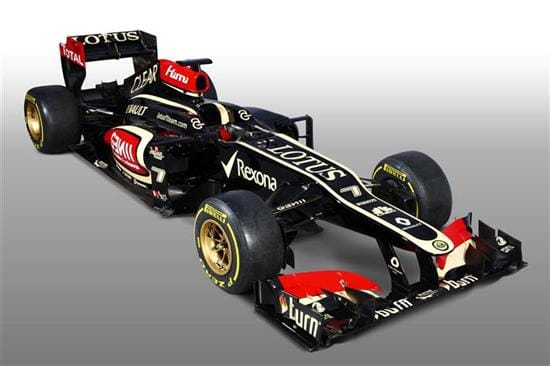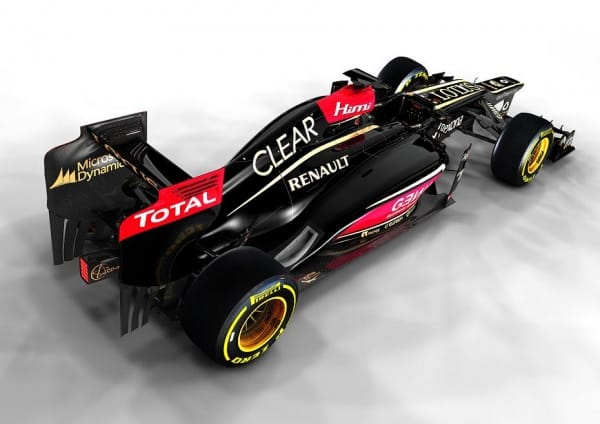
FOLLOWING THE LAUNCH OF THE LOTUS F1 TEAM E21 EARLIER THIS EVENING, TEAM PRINCIPAL ERIC BOULLIER AND TECHNICAL DIRECTOR JAMES ALLISON DISCUSS THEIR THOUGHTS ON THE SEASON AHEAD.
Eric Boullier: “Great things are possible”
How are you looking forward to 2013 and what do you hope can be achieved?
I think it is fair to say that great things are possible. The leap we made from 2011 to 2012 showed what we are capable of. Add to this the continuity and potential of our driver line-up and we have a very powerful cocktail for the season ahead. Our ambitious plan to turn ourselves into one of the top teams in Formula 1 is coming to fruition and now we need to harness this with strong and regular podium results.
What advantages does the team have compared to its championship rivals?
We are lean and hungry. Enstone knows how to win championships, but it is a while since we have won so we are very eager to taste glory again. We have a fantastic facility at Enstone and one which has benefitted from significant and strategic investment over the past couple of years. We have a highly accomplished technical and design team who last year produced a fantastic car, the E20. The E21 builds on this. We have a superb driver line-up with the 2007 champion, Kimi, and a hungry young gun in Romain. We have further strength in our partners and we are certainly primed and ready for action.
How do you see the driver dynamic evolving through the course of the season?
We know that both drivers work well together and their skills and talents complement each other. Kimi has such a wide range of experience and he knows how to react to any situation or circumstance. He’s also a superb resource technically. Romain has superb raw speed which we are confident will be harnessed in a more effective manner during races in 2013. Both are competitive individuals – as racing drivers are – and this pushes each one of them and the team to better things. It was clear how much we benefitted from having two very talented drivers in 2012 and I can only see this getting even better in 2013.
Where does the team’s focus lie in 2013?
It is certainly an interesting year. On the one hand, we have the season ahead and the very strong desire to achieve great things. On the other hand, we have significant technical changes around the corner in 2014 and an element of resource will naturally be focused on this area. On the track we want to achieve the very best results possible and this is true off track too. In every element of our operations we want to be the best.
Are there formal targets for 2013 and what are they?
We want to do better than we did last year. 2012 was a good season for us – certainly in the context of the previous season – but we, like every team in this highly competitive sport, want to win. We want to make regular appearances on the podium, and add to our tally of appearances on the top step.

James Allison: “There is an element of expectation from the E21”
Lotus F1 Team Technical Director James Allison looks to the season ahead
How different are the 2013 regulations compared with 2012?
After a string of quite eventful rule changes and interpretations in the years since 2009 it looks as if 2013 is going to be a year of regulatory stability. There are only a few, very limited changes which comes as a considerable relief to the entire grid given the size of the transformation bearing down on the sport for 2014. Mind you, even with no changes to the text of the regulations, we never stop poring over the rules to look for new loopholes. Quite often, young engineers fresh from university will point out an ambiguity in the text of a regulation that has been settled for decades because they are looking at what is written with fresh eyes and no preconceived ideas about what is actually intended.
Will the cars we see in 2013 look much different from those we saw in 2012?
I’m guessing not. There is one rule which opens the possibility for a change as we will now be permitted to fit a non-structural ‘vanity panel’ on the upper surface of the nose as a means of avoiding the duck-bill style designs that we saw in 2012. However, such a panel is optional and I would not be surprised if the majority of the grid chose not to make use of it. The panel will add a few grammes of weight and so is only likely to run on the car if a team can find a performance benefit for doing so.
Does continuing with two drivers give the technical team benefits?
The best thing about sticking with our 2012 pairing is that they are both fast! Fringe benefits also include not having to re-invent the seat, pedals, steering wheel and so on. Not having to establish fresh relationships between engineers and drivers is also welcome.
What is completely new and what is more familiar on the E21?
Depending on where you look, some parts of the new car are a ground-up redesign and in other areas we have further optimised the best bits of the design philosophy we’ve adopted for several seasons. The front and rear suspension layouts are substantially revised to try and give us better aerodynamic opportunities. The front wing is a continuation of the concepts we have worked on since the 2009 rules were published. For the rear wing system, we’ve continued to try to work on having a satisfactory level of rear downforce stability whilst having maximum DRS switching potential.
Talking of DRS; what about the so-called Double DRS Device?
This is an area we continue to work on and the passive nature of the switching of our device means it is not outlawed by the latest regulations. It is not something which will be a silver bullet to transform our car, but it is something which could add performance as part of the overall design.
Are there likely to be any further ‘secret weapons’ in the arsenal for 2013?
That would be telling.
Does the E21 have great expectations on its shoulders?
The E20 proved itself to be an effective racing car, so there is an element of expectation from the E21. We have continued with our design themes and tried to build a more efficient and faster racing car based on all the lessons we learnt last year. How successful we have been at this we will only know once we take to the track at Grands Prix.
What can we expect from Pirelli’s 2013 tyres?
We had a brief taste of the development tyre on track at Brazil and it did appear to be a step forwards. Pirelli have also published the compound list for 2013 and we are happy to see that they are sensibly aggressive choices. Pre-season testing will give us a much better idea of what to expect, but most of the indications suggest that the tyres will play a helpful part in making another attractive season.
What are the goals and targets for 2013?
In terms of goals and targets, we never set out to build the second-fastest or third-fastest car; we set out to build the fastest and most effective car that we possibly can. We want to improve our car in all areas from last year’s and we want the improvements we make to be greater than those made by the opposition. However, having said all that, the official target established by the team’s owners is to achieve a minimum of third place in the Constructors’ Championship.
